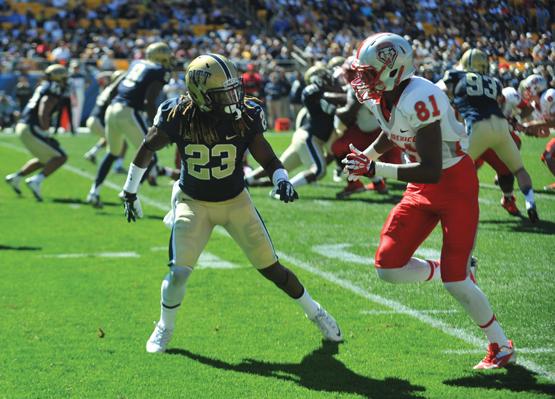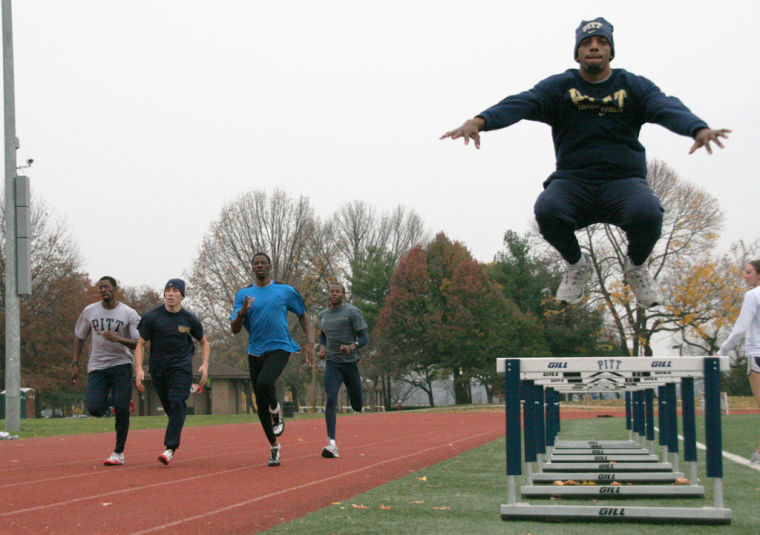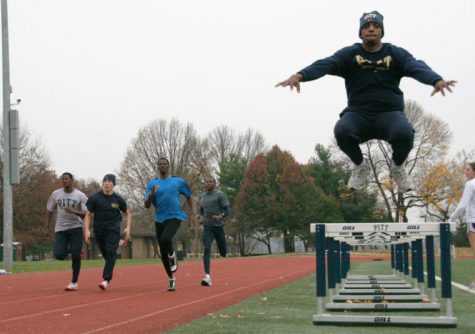Column: Pitt’s defense not a cause for concern just yet

Lafayette Pitts covers a New Mexico wide receiver.
September 25, 2013
Pitt football’s 58-55 victory over Duke raised a lot of concerns among fans, and many called for defensive coordinator Matt House to be fired only three games into his career as defensive coordinator. But this view isn’t based in reality by any means.
For one, House’s tenure has spanned only three games, which is not nearly enough of a sample size to justify calls for his termination. On another note, it also takes time for a defense to come into its own.
Look no further than the 2012 season, when Pitt’s defense finished in the nation’s top 25 in yards allowed per game. In its first six games last year, the Pitt defense allowed averages of 25.2 points per game and 343.5 yards per game and had eight takeaways.
Unlike most teams, Pitt had a fairly balanced schedule in 2012. The Panthers faced two FCS teams — Youngstown State and Gardner-Webb — in the first half of the season, and saw Big East bottom feeders — such as Temple and South Florida — in the second half.
Pitt had future Sugar Bowl champion Louisville in the first half and national-title game competitor Notre Dame in the second.
Chryst’s squad beat two ranked teams last year — one in each half of the season. Pitt beat Virginia Tech in the first half and Rutgers in the second half. The two teams met in a bowl game and the Hokies won 13-10 in overtime.
With the first-half defensive stats in mind, take a look at what the Pitt defense did in the second half. It allowed 14.2 points per game, 308.2 yards per game and 12 forced turnovers. That’s 11 fewer points per game, approximately 35 fewer yards per game and four more turnovers.
Now, Pitt does have a new defensive coordinator this year in House after Dave Huxtable was more or less shown the door, but it’s rather common for offenses to excel early while defenses struggle.
Continuing with the coaching, it would be more of a story if the Pitt offense was struggling.
Chryst was hired on the back of his explosive Wisconsin offenses and is considered one of college’s premier offensive minds. Also, two of his biggest hires from his time at Wisconsin are current offensive coordinator Joe Rudolph and offensive line coach Jim Hueber.
After a full offseason to groom Tom Savage into a big-armed quarterback, it would be a lot more worrisome if the Panthers’ offense was struggling.
Chryst’s most notable work with a quarterback is current Seattle Seahawk Russell Wilson, who transformed from a decent quarterback at North Carolina State into a Heisman contender.
At N.C. State, Wilson had a completion percentage of 57.7, 25.3 touchdowns per season and 8.7 interceptions per season. In his one campaign at the University of Wisconsin playing under paul Chryst, Wilson completed 72.8 percent of his passes for 33 touchdowns and only four interceptions.
To put it simply, the coaching would be worrisome if Pitt’s offense struggled early, because the Panthers have some of the best offensive coaches in the nation.
We can take a look at Chryst’s first season at the helm again to prove that offense tends to trend downward only slightly.
In the first six games of 2012, Pitt scored 27.5 points per game, averaged 445.5 yards per game and had seven turnovers. In the second half, the Panthers scored 27.3 points per game, averaged 443.3 yards per game and had one turnover.
Remember, Pitt had an extremely balanced schedule in 2012. Its 2013 schedule is more traditional and backloaded.
The Panthers have three elite teams on their schedule this year — Florida State in the first half, Miami and Notre Dame in the second half. Of its three non-BCS matchups, New Mexico and Old Dominion are in the first half. Navy, the other one, is its toughest non-BCS opponent and is in the second half.
Pitt’s ACC schedule also includes Duke, Virginia and Virginia Tech — all lower-half teams, it appears — while Georgia Tech and North Carolina — potential dark horses to compete in the conference — are in the second half.
Because of the back-loaded schedule, Pitt’s offense should dip from its current rate of 41 points per game and 474 yards per game. A dip from there will still leave the Panthers in the mid-30s in points per game and averaging over 350 yards per game.
A good place to dip will be the turnovers. Stats and common sense show that Pitt won’t continue to average 2.3 turnovers per game.
As those turnovers disappear, the defense will be placed in less compromising positions. Pitt’s defense will improve with better field position.
Currently, Pitt is 102nd out of 123 in yards per game and 118th in points per game. The defense will improve. It almost has to.
If the Panthers can pull together an average defense, about 25 points per game, their offense will carry them very far.
Pitt fans should be concerned about the defense, but stats show that improvements will come — the defensive line won’t allow 40 points per game all year.
If it does, then we can talk about House.







